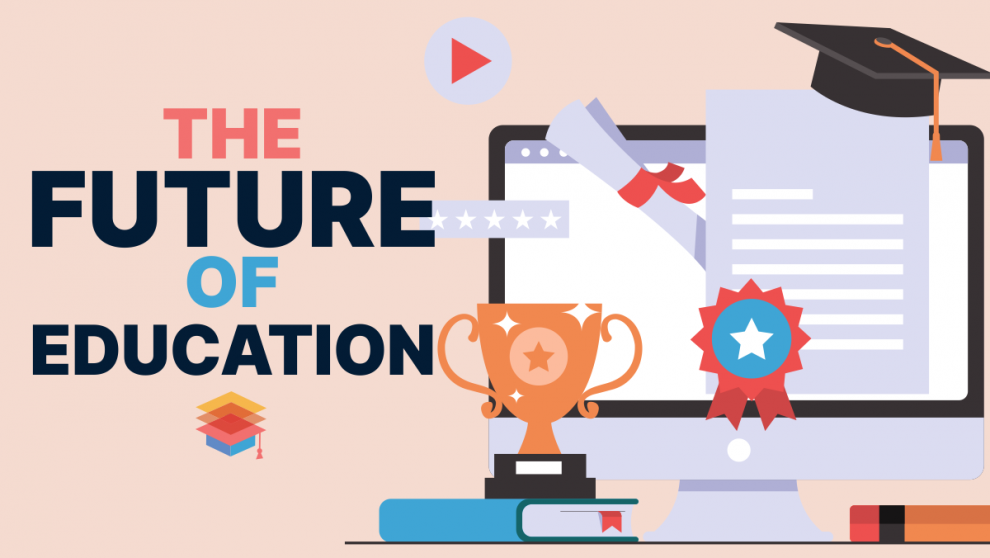Online education has evolved from a niche offering to a fundamental pillar of the higher education system and increasingly K-12 schooling. The rise of educational technology and internet connectivity has enabled remote learning models that are radically transforming how students gain knowledge, skills, and credentials. Here we explore some of the major ways online learning is changing education on a global scale.
Increased Enrollment and Access
One of the most significant impacts of online learning is vastly increasing access to education. According to McKinsey, over 170 million students worldwide are enrolled exclusively in distance learning programs, up from under 10 million two decades ago. Remote formats provide options for many non-traditional students unable to attend traditional campus-based programs. As stated by Martin Bean, former Vice-Chancellor of Open University:
“Online learning has removed barriers to education and enabled people to develop relevant skills and knowledge for employability.”
Some key ways online education is improving access include:
Reaching Remote Populations
Students in rural or isolated areas can now attend full degree programs through internet access without relocating. This also benefits military service members, prisoners, and traveling workers.
Accommodating Disabilities
Individuals with disabilities and medical conditions have greater educational opportunities through digital accessibility tools and options that do not require physical mobility.
Serving Lower Income
Lower tuition rates, no commuting/housing costs, and the ability to work while learning improve affordability and options for lower income students.
Flexibility for Working Adults
Remote and self-paced online models allow working professionals to upskill while minimizing disruption to their jobs and families.
Early College for High Schoolers
Through dual enrollment and early college online options, high school students can gain college credits getting an advance start on their post-secondary education and saving tuition costs.
Second Chances
For those who previously dropped out of college, online programs offer an accessible means to return and complete their degrees as adults.
According to Harvard’s Clayton Christensen, “Many more students now have access to education they would otherwise not have.” Online learning expands higher education possibilities to unprecedented numbers globally.
Customization and Personalization
Online education provides more personalized learning paths tailored to individual student needs and interests versus one-size-fits-all degree programs of traditional institutions. Some examples of greater customization include:
- Self-paced courses allow learners to accelerate or slow their progress as needed.
- Flexible scheduling provides learning at each student’s optimal times.
- Adaptive learning technology customizes content and assessments to student proficiency levels.
- Learner dashboards and analytics provide insight into individual strengths and weaknesses to focus improvements.
- Wider course options allow students to shape degree paths matching their goals.
- Competency-based models award credit for applied skills mastery versus seat time.
- Prior learning from work or other sources can count toward degree requirements with credit transfers or testing options.
- Stackable credentials allow combining certificates, certifications, and degrees from multiple institutions in personalized paths.
According to the Bill and Melinda Gates Foundation, these personalized online options help education “adapt to each student’s needs instead of expecting students to adapt to the system.”
Collaborative Learning Communities
Early online courses leaned heavily on static content delivery and independent work. However, modern online programs employ interactive collaboration tools to build learning communities that may even exceed in-person engagement. Some examples include:
- Web conferencing for video lectures with live Q&A sessions.
- Shared virtual workspaces for group projects and peer review activities.
- Online discussion boards facilitate information sharing and idea exchange asynchronously.
- Social media groups and other digital networking support informal continued dialogue.
- Virtual office hours with instructors for direct mentorship.
This connectivity with a diversity of classmates and faculty fosters the social aspects and group learning dynamics that make education effective and rewarding according to researchers like Simon Nelson and Gabriela Pleschova.
Data-Driven Assessment
Online learning produces extensive student data through digital assignments, activities, and assessments that enables improving educational experiences in a way not possible with traditional models. Some examples include:
- Complex simulations and interactive assessments provide richer insights into learner knowledge and skill levels.
- Granular tracking of online behaviors identifies activity patterns, participation rates, materials accessed, and other metrics to fine tune course design.
- Automated grading and reporting provides immediate performance feedback to students while compiling data for instructors.
- Analytics predict at-risk students based on engagement patterns so interventions can be made proactively.
According to education scholars like Dr. Linda Shepherd, “These robust analytics help teachers differentiate instruction, target interventions, and improve outcomes for online students.”
Multimedia Learning Resources
The online environment facilitates utilizing diverse, interactive, and up-to-date learning materials that tend to be more engaging and effective for students. Some examples include:
- Video lectures, animated lessons, simulations.
- Podcasts, apps, and digital games for learning through different modalities.
- Immersive online virtual reality educational experiences and virtual field trips.
- Digital versions of textbooks and readings with embedded multimedia.
- Open educational resources and platforms enable sharing of best quality learning materials.
Researchers like Dr. Richard Mayer have demonstrated multimedia instruction can improve knowledge transfer and retention up to 50% compared to traditional textbook methods.
Ongoing Innovation
Online education continues to be one of the most innovative segments of education technology. Massive open online courses (MOOCs) from elite universities, artificial intelligence tutoring, virtual reality lessons, and other cutting edge solutions continue to emerge and evolve. Some leading examples include:
- Georgia Tech’s Online Master’s in Computer Science powered by machine learning and AI to teach at scale.
- Minerva’s active learning forum platform uses virtual simulations to teach decision making and critical thinking.
- Mixed reality educational games like Grammaropolis make learning immersive.
- Carnegie Mellon’s cognitive tutor software provides AI-based math tutoring personalized to students’ knowledge gaps.
This constant innovation keeps online options on the leading edge of preparing students for the modern world and workplace.
Cost Efficiencies
Delivering education online eliminates substantial costs related to physical campuses allowing lower tuition rates that increase access and affordability for students. Some examples include:
- No expenses related to buildings, facilities, parking, dormitories
- Lower faculty costs with larger class sizes and group discussions instead of individual lectures.
- Eliminate campus staff like administrative, maintenance, food services, transportation
- Textbooks converted to digital materials at much lower cost
- Increased faculty productivity enabled by online automation and data
Bain & Company estimated leading online programs reduce education delivery costs by up to 45% compared to in-person instruction.
The New Normal for K-12 Education
While historically focused on higher education, remote and online learning exploded into K-12 schooling during the COVID-19 pandemic out of necessity. This massive unplanned experiment demonstrated remote capabilities for primary grades and is driving lasting digital education transformations. Some examples include:
- Virtual school options expanded across public school districts
- Private and charter schools adopting online components
- Hybrid models blending physical and remote instruction
- More 1:1 device programs and digital content integration
- Expanded teacher professional development on remote instruction
- Upgraded connectivity and infrastructure for digital learning
According to education technology researcher Professor Bror Saxberg, “The pandemic pushed educators to figure out how to teach remotely. Now we must apply those learnings to reimagine K-12 education for the digital age.”
The reach of online education will only continue expanding across age groups and industries as new technologies empower more effective digital learning capabilities. While still requiring intentional design and delivery methods, online options are opening more equitable access to personalized, engaging education experiences that were not feasible through traditional formats and physical classrooms alone. The pace of innovation and increasing integration of online components promises to fundamentally reshape schooling and training at all levels for the future.


















